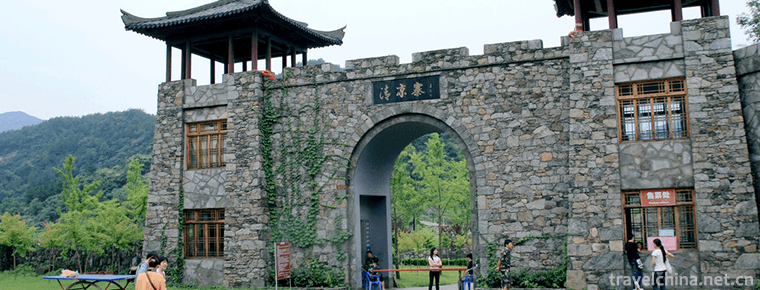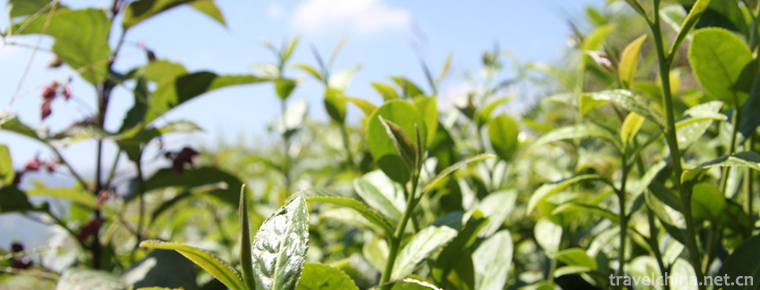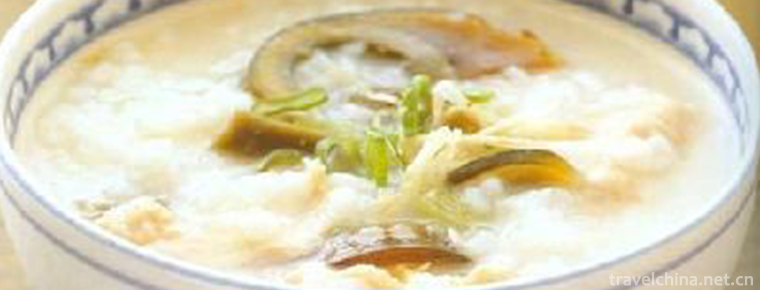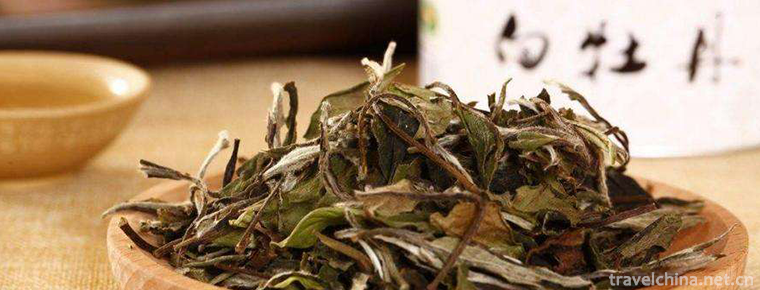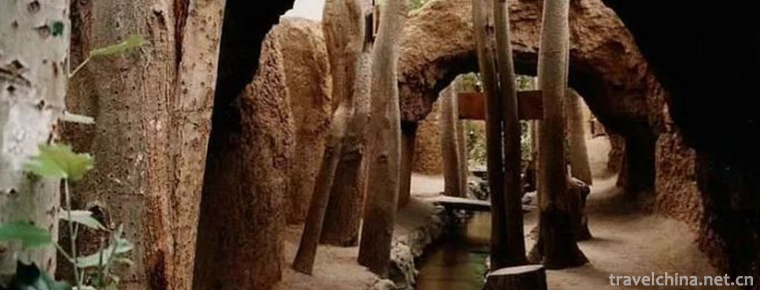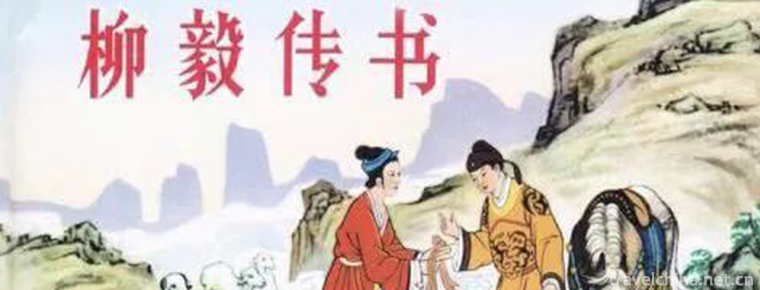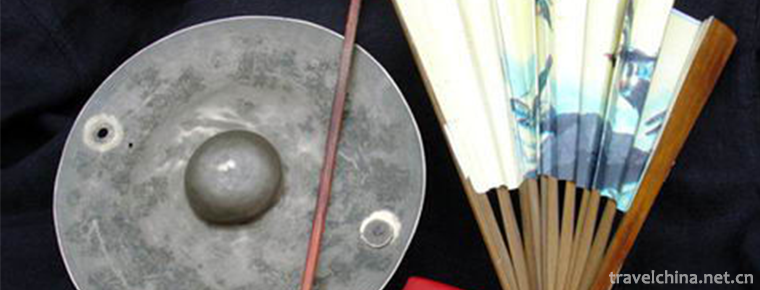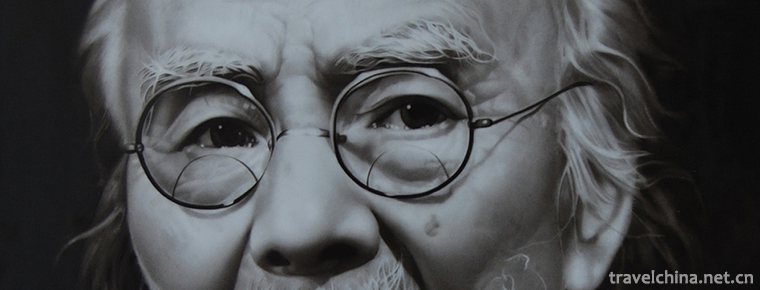Production Techniques of Silk in Chengdu
Production Techniques of Silk in Chengdu
Silk is the most distinctive traditional gold and silver handicraft of the Han nationality in Chengdu. This metal craft has a history of more than 1700 years. It has reached a very high artistic level in the Ming and Qing Dynasties of China. Together with Shu embroidery, bamboo weaving and lacquerware, it is also known as the "Four Famous Dances" of Chengdu. It can make silk jewelry and ornaments. Cultural relics handed down from the late Qing Dynasty to the early Republic of China include silk enamel Phoenix birds with precious Red Agate Earrings and silver silk knitted crane-like jars. In 2009, the Ministry of Culture designated Dao'an as the national non-hereditary successor of silk production technology in Chengdu. In addition, there are provincial successors Liu Tao. The units responsible for project protection and the seminars include Chengdu Gold and Silver Products Co., Ltd. and Chengdu Dao'an Art Works Co., Ltd.
Because there are no successors, the technology of burning blue, stacking scenery and tireless forming of silver filament has been lost, and the technology of chips has been lost. According to Dao'an, Qian Pian technology was originally only mastered by Zhang Yongchang of Chengdu Gold and Silver Factory, but Zhang Shifu was unwilling to pass on the technology, and his son was unwilling to learn it, so the technology was completely lost after Zhang Yongchang died. Dao An reluctantly said that at present, "silver burning orchid, heap scenery, tireless molding" three major technologies are only able to master themselves.
On June 7, 2008, silver filament was approved by the State Council to be included in the second batch of national intangible cultural heritage list.
Development history
The production of gold and silver wares in Chengdu originated from the Shang Dynasty in 1700 B.C. and the silk wares of honeysuckle appeared in the Han Dynasty. By the Han Dynasty, Chengdu's gold and silver wares had a high level of technology. The government of the Western Han Dynasty set up officials to supervise the manufacture of gold and silver in Chengdu and Guanghan counties, and the scale has been relatively large. Apart from being enjoyed by the court, it also bestowed a great history of the feudal territory and meritorious ministers. In the Han tombs of Mawangdui in Changsha, Fenghuangshan in Jiangling in Hubei and Qingzhen in Guizhou, as well as in the ancient tombs of Pyongyang in Korea and Noin Ura in Mongolia, a large number of gold and silver articles with the stamps of "Western Workers in Shu County" and "Chengdu County Workers" have been found. By the Song Dynasty, the gold and silver wares in Chengdu had been exquisitely made, and there appeared silk and film products. In 1969, a group of silverware made in Chengdu in Song Dynasty was found in Xiaoquan Town, Deyang, Sichuan. They are lotus cups, chrysanthemum cups, hollow boxes, melon-shaped pots, etc. They have various shapes, ingenious structures and exquisite workmanship. By the Ming and Qing Dynasties, the technology of honeysuckle filament in Chengdu gradually formed a unique "flat filling" filament technique. During the Ming and Qing Dynasties, the technology of piling up silk, filling silk, stacking silk, carbon silk and carving of honeysuckle silk in Chengdu was widely used, and gradually formed local characteristics.
The Nanjing National Government of the Republic of China moved inward, and a large number of cultural celebrities, officials and businessmen gathered in Chengdu. Jinhao and Yinlou are springing up in large numbers. Huaxing Street, Dongjie Street, Dajin Street, Department Socks Street and Gulou Street all adopt the business model of front stores and back factories to produce a large number of silk products. Today, Wenwu Road begins in the south, and Baiyun Temple Street connects with the intersection of Lingjiaan Street and Tongshun Bridge Street in the north. At that time, silverware and silk handicraft workshops mostly converged here, hence the name Silver Street, which is still in existence. However, after the War of Resistance Against Japan, the market gradually declined and the production of gold and silver wares in Chengdu fell into a downturn.
As a result of the war until the eve of Chengdu's liberation in 1949, only a few gold and silver buildings, such as Lao Qinghe, Wufeng, Lao Fengxiang, Tianchengheng and Tianbao, barely maintained production. There are only rings. In October 1951, the West Sichuan Branch of the People's Bank of China set up a state-owned Chengdu Gold and Silver Jewelry Shop with some gold and silver artists in Chengdu. In 1959, the state-owned Chengdu Gold and Silver Jewelry Shop merged with the National Goods Production Cooperative to establish the state-owned Chengdu Silver Silk Craft Factory. Later, Chengdu Gold and Silver Products Factory was established. In 2000, Chengdu Gold and Silver Products Co., Ltd. was restructured. In the early 1980s, Chengdu Gold and Silver Jewelry Factory and Chengdu Metal Handicraft Factory of Chengdu Gold and Silver Jewelry Industry were listed as designated units for foreign tours and shopping. Guangzhou Handicraft Import and Export Corporation underwrites the exclusive sale of Chengdu Silver Handicraft. The products are re-sold to Europe and the United States through the Soviet Union. In 1994, Chengdu Gold and Silver Products Factory was designated as the "designated production enterprise of national tourism commodities" to produce filament inlay.
Process characteristics
The greatest feature of silk technology is that it uses "flat filling" technology and has no tire.
It reflects the artist's superb and exquisite skills. According to the design drawings, artists adopt different thick and thin pure silver silk, first make graphic borders, and then fill and weave the middle patterns with different techniques. This unique skill is reminiscent of embroidery and other handicraft techniques, all based on artists'artistic perception and skilled hands. Additionally, with the application of comprehensive technologies such as filament filling, baseline, threading, twisting and welding, an exquisite silk product was born under the artists'hands. Even three-dimensional products, large and complex products and irregular square and circular products, all adopt tireless forming method, which highlights the technical and artistic content of this folk craft. With high purity silver as raw material, it has unique shape, exquisite and exquisite, rich Han national characteristics and unique local style.
Chengdu silver silk technology, there is also a key process, that is, silver anti-discoloration process treatment, which enables silver silk products to maintain a soft luster for a long time, not fading, thus bringing a balanced aesthetic feeling to the product. Generally speaking, silk handicraft has the characteristics of rigorous structure, simple and generous, virtual and real, exquisite and exquisite, elegant and noble. It is a rare folk handicraft.
Protection and Inheritance
Protection of Honeysuckle Silk
Dao'an is the inheritor of the national intangible cultural heritage (Chengdu silver silk production skills), the top ten folk artists in China, and the master of Sichuan arts and crafts. He has been engaged in silk design and creation for more than 30 years. Silver silk painting was innovated in 1999 and won the national patent in 2001. Chengdu Dao'an Art Works Co., Ltd. was founded in 2003 and is now named Dao'an Master Silk Studio. Its representative works include "Three British War Lubu", "Relief Hanging Screen", "Du Fu Cao Tang", "Sanxingdui Male Rooster", "Three-dimensional Decoration" and so on. The works have won awards many times in national provinces and cities, and are deeply loved and praised by people at home and abroad.
Master Dao'an Silk Studio, Jinniu District
Mainly engaged in
The preservation and inheritance of silk making techniques in Chengdu, a national intangible cultural heritage. The company uses traditional handicraft techniques to produce more than 100 kinds of silk artworks, which are classified as silk paintings, three-dimensional ornaments, jewelry and so on.
Face lost
Silk inlay in Chengdu is mainly made of silk. Silver is usually drawn from fine silver bars, which are fine and uniform, and also made of polymorphic. Single filaments are mostly used as edge lines, while multiple filaments are twisted into twisted twists with more than two silver filaments. In the 34 years of Guangxu (1908), Chengdu created flat-filled silk products without placenta. There are more than 400 kinds of products, such as plates, boxes, bottles, bottles and rings.
There are many processes of silver filament. The thinnest silver filament is only half of human hair and the thickest is only a few millimeters. After drawing silver into silver wires of different thicknesses, filling and weaving the middle pattern with four techniques of stranding, filling, knitting and repeating according to the figure frame that has been made, this unique skill relies on the artist's artistic perception and skilled hands. Old silk technology says "three years and zero or one cuts", meaning that it will take at least three years to get out. As long as the "one piece" is spent, the teacher will have the final say. Because of the complexity of the process and the variety of working procedures, it can not be completed by one person alone. Even if many craftsmen have learned how to make silk, they can not be independent portals. This is one of the reasons for the loss of silk apprentices.
Chengdu silk production technology is now a national intangible cultural heritage. But compared with Shu embroidery brocade, the traditional handicraft of silk with a history of more than 1700 years is not very familiar with the common people, because it is basically exported in the planned economy era, although the market is open, but because its price is relatively expensive, and people's consumption concept is more realistic, so it is not very familiar with the common people. Because of the complexity of silk production technology and the long time consuming, there are few people who can produce silk technology, so this technology is also facing loss. Dao'an of Chengdu Gold and Silver Products Factory is the national non-hereditary inheritor of Chengdu Silk production technology, and the only artist in the country who can master the whole process of Chengdu Silk production technology. In 1999, Dao An resigned from Chengdu Gold and Silver Products Factory, set up his own studio, and invented the patented product "Silver Painting". Wang Xiaolu is Dao'an's daughter and also the inheritor of Dao'an silk craftsmanship.
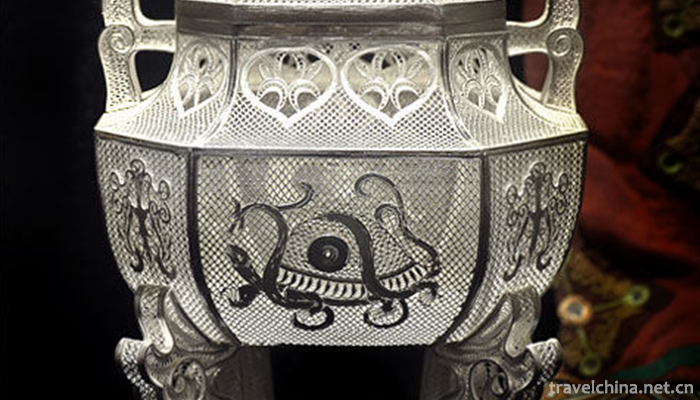
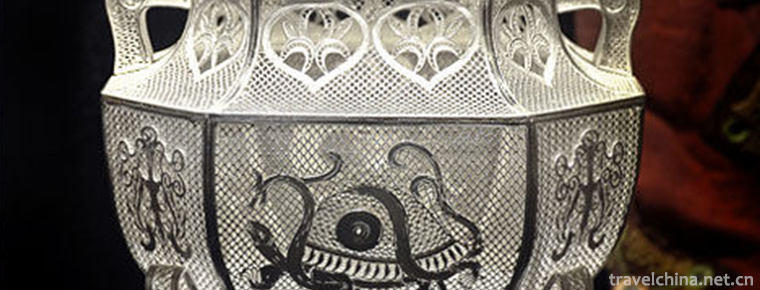
Production Techniques of Silk in Chengdu
-
Huangpi Mulan Cultural Ecotourism Area
Wuhan Huangpi Mulan Cultural Eco-tourism Area is located in Huangpi District, Wuhan City, Hubei Province, including Mulan Mountain, Mulan Tianchi, Mulan Grassland
Views: 235 Time 2018-12-12 -
Anxi Tea Grand View Garden
Anxi Tea Grand View Garden in Quanzhou, Fujian Province is located in Fengguan Mountain on the north side of Fengcheng City. It covers an area of 11 mu
Views: 148 Time 2019-01-02 -
Danxia Chishui
Danxia National Geopark in Chishui City, Guizhou Province, is located in the southern edge of Sichuan Basin, close to the northern foot of Daloushan Mountain in northern Guizhou Province and the weste
Views: 230 Time 2019-01-05 -
Jilin Beidahu Skiing Ground
Jilin Beidahu Skiing Ground is located in Jilin Beidahu Development Zone, 53 kilometers away from Jilin urban area. Entering the ski resort, facing the Asian Games Village Hotel.
Views: 171 Time 2019-01-19 -
Xue Xiang Snow Township
Snow Township, the full name of "China Snow Township National Forest Park", is located in Changting Town, Hailin City, Mudanjiang City, Heilongjiang Province, China, and belongs to the Dahai
Views: 224 Time 2019-02-27 -
Eight treasures porridge
Babao porridge is a dish of Manchu and Han Dynasty. It tastes sweet and delicious and enjoys a high reputation.
Views: 252 Time 2019-03-26 -
White Tea Making Skills Fuding White Tea Making Skills
The production technology of Fuding White Tea is the central process of creating Fuding White Tea. It has superb production method and unique scientific and artistic charm
Views: 292 Time 2019-04-03 -
Cutting Skill of Kaner Well
Kanerjing is the meaning of "well hole". It has been recorded as early as in Historical Records. It is called "well canal", while Xinjiang Uygur language is called "Kanerzi&qu
Views: 152 Time 2019-05-08 -
Legend of Liu Yi
The legend of Liu Yi's biography is one of the oldest popular folklores in Chinese history. With Liang Zhu, Tianxian Pair and White Snake Legend, they are called the four legends of Chinese folklore.
Views: 213 Time 2019-05-14 -
Pinghu cymbal book
Cymbals are a unique form of local traditional folk art in the Wu dialect area of Jiangnan. According to the Records of Songjiang County, it was formed in the Qing Dynasty (1821-1850). It is now mainl
Views: 154 Time 2019-06-09 -
Qi baishi
Qi Baishi (January 1, 1864 - September 16, 1957), formerly known as Zhi Zhi, the word Wei Qing, No. Lanting Pavilion, later renamed Huang, the word is on the edge, the number of Bai Shi, white stone m
Views: 314 Time 2019-09-04 -
Cultural corridor of Confucianism Buddhism and Taoism
Emei Mountain Confucian, Buddhist and Taoist cultural corridor inherits and develops Chinese traditional culture through different aspects, and excavates its own value and charm from Emei Mountain's historical culture, and highlights its connotation of "China's first mountain".
Views: 158 Time 2020-10-15
